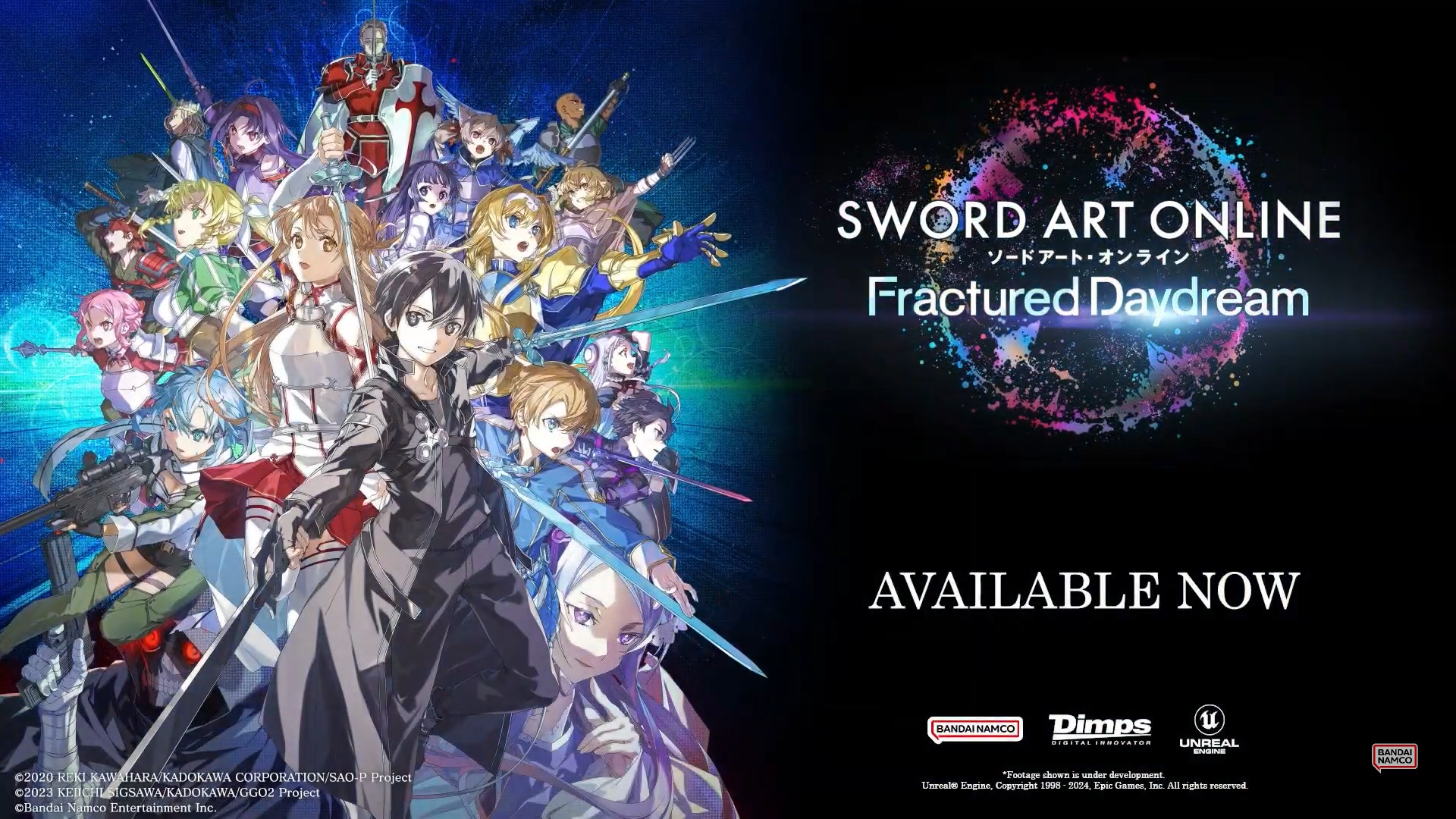Developed By: Dimps Corporation
Published By: Bandai Namco Entertainment
Platforms: PlayStation 5, Xbox Series X|S, Nintendo Switch, and Steam
Reviewed On: PS5
Review Code Provided By: Bandai Namco Entertainment
When it comes to grind, burnout is the main problem in any gaming landscape especially for Sword Art Online series as a prime example. An anime series initially about players trapped in a virtual reality game and dying for real but slowly stretches itself thin after multiple seasons akin to playing Destiny 2 on steroids.
With endless quests grind, constant updates of different games of similar avatars, and a never-ending cycle of other less urgency of life and death situations.
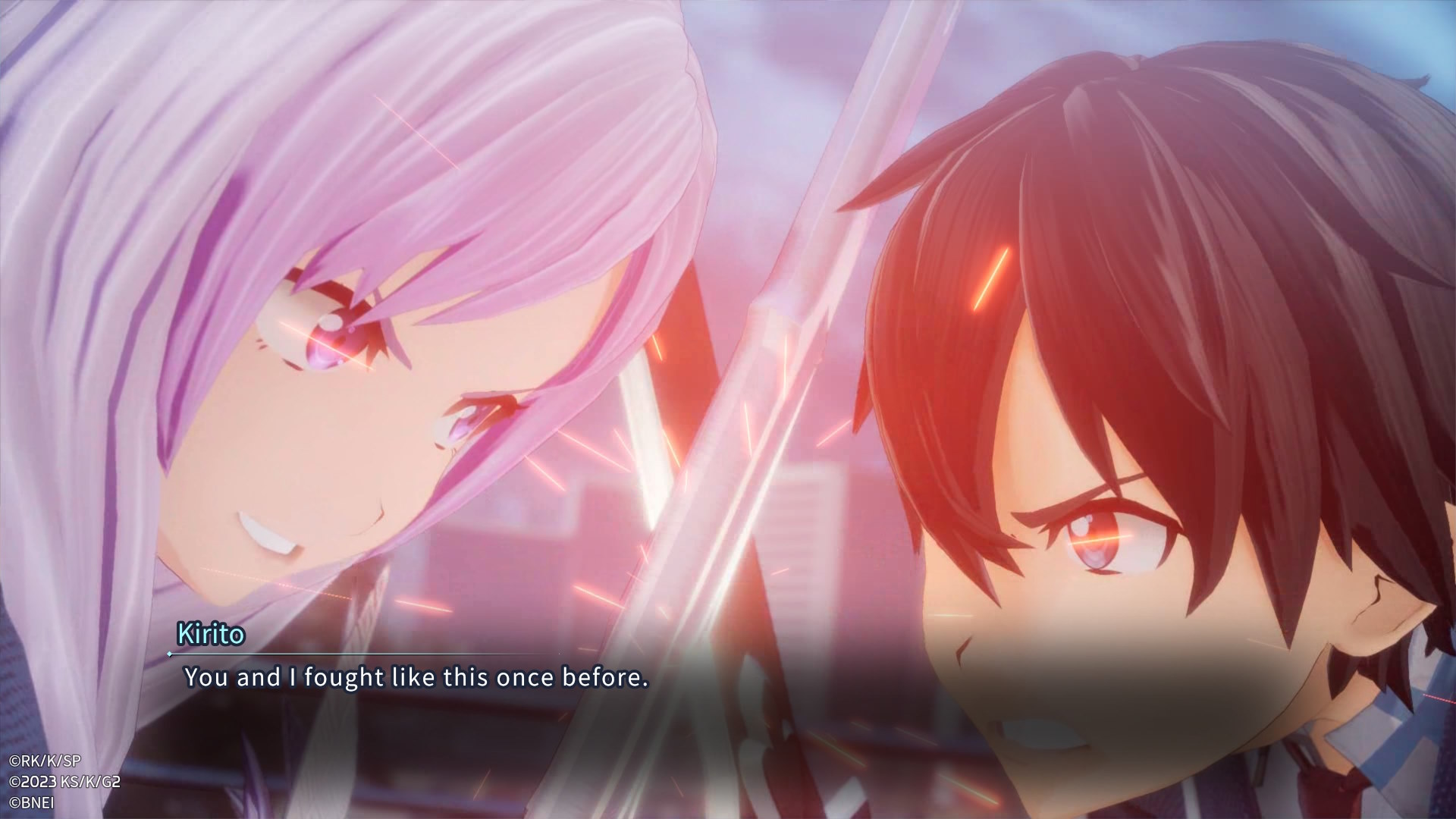
It’s a wild ride, but let’s be honest: the plot in the anime tends to stretch itself thinner than before, akin to milking for more screen time from the fans with constant new series and plots like putting a DLC in the anime itself.
Hence translating to the story in the game may not hit as hard as the initial season one as there were fewer lives and urgency at stake.
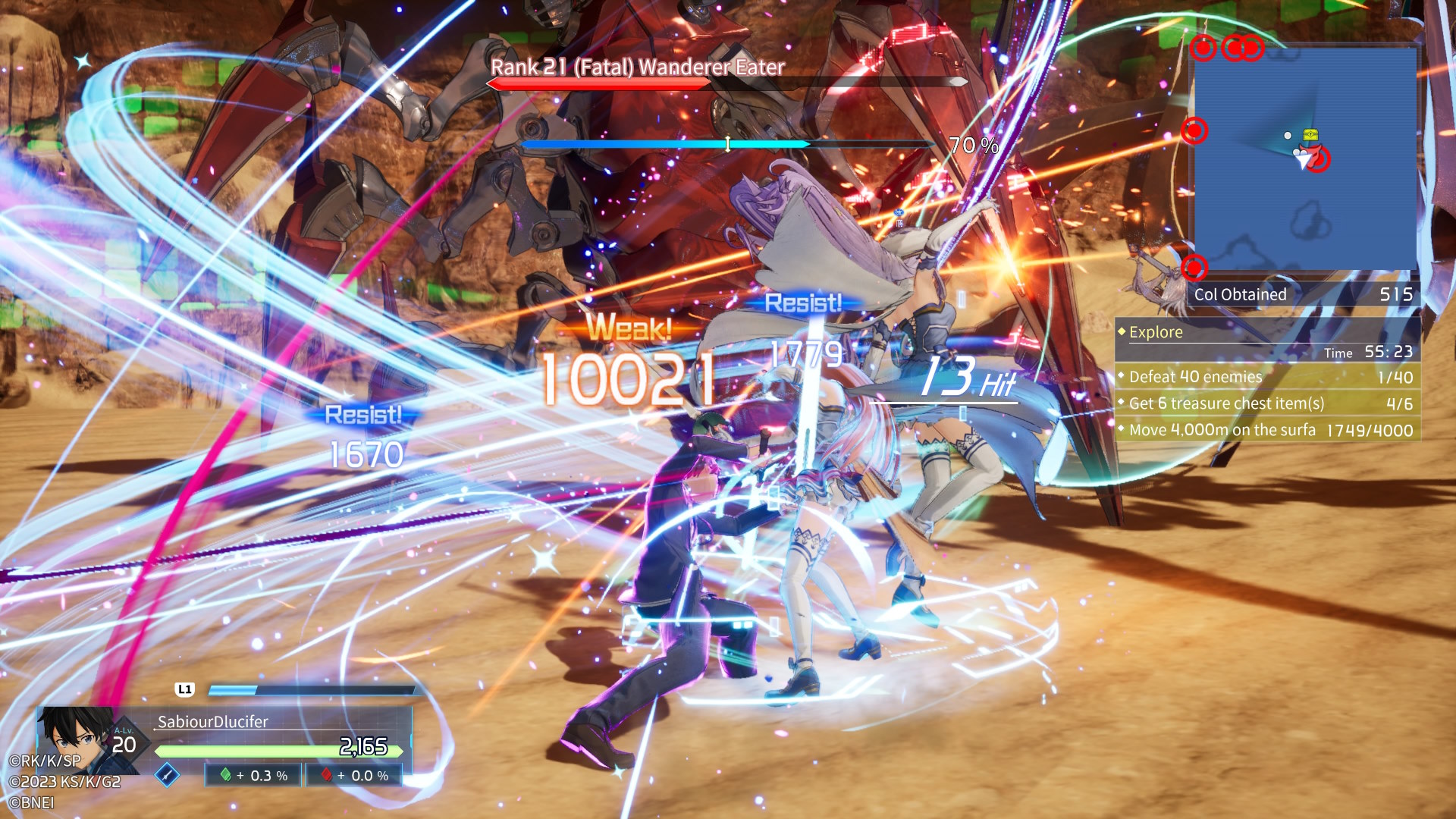
If you really are a fan of the series, this is an absolute must however for casuals such as myself, I would recommend holding it off until a sale comes along. In reference, I will call this game SAO as a short form from now on.
Storytelling – Reunite Because..
Don’t expect a groundbreaking story as SAO storytelling focuses on putting characters from other series into the same server.
This time around from sword-wielding medieval characters to a gun-toting or sniper-based character from different games just stumbled on each other for the first time and seeing how the chemistry and communication between them come to life.
It can be delightful at times and comedic if you know any of the characters in the past and see how they react to each other.
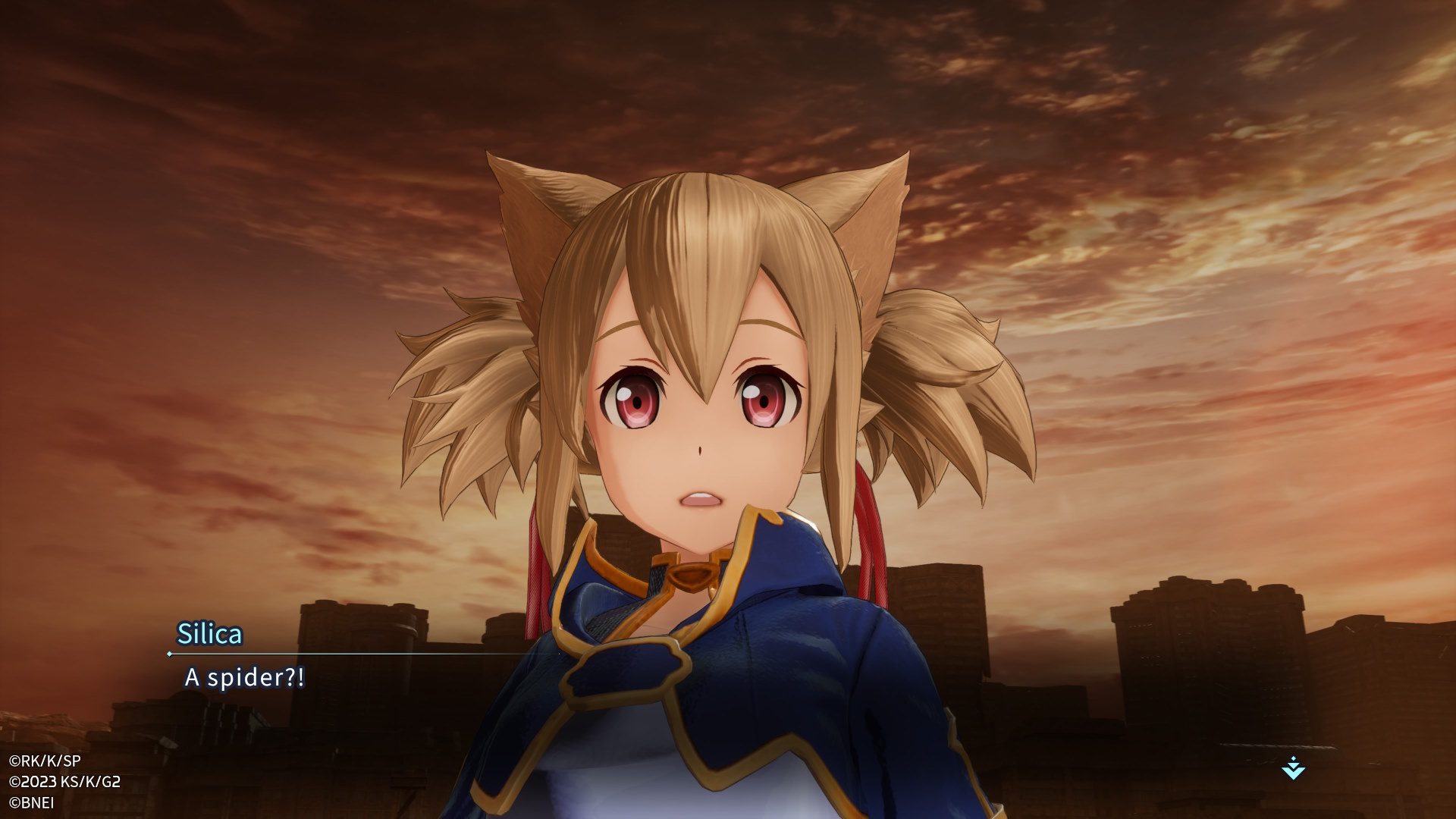
SAO tries to rehash the original series without getting the characters killed, with Kirito and his friends as well as foes caught in another spiral virtual reality trap.
With a few loose amnesia in between just to rekindle that sense of nostalgia when they do remember in later chapters. But don’t expect anything too deep or original as the story heavily relies on players’ knowledge of all the stories and characters before embarking on this game.

If that doesn’t interest you, then unfortunately that’s how the whole flow of the storytelling goes – think of it as a filler for another Naruto episode but under SAO instead and that’s how it goes.
There will be no new discoveries or deepen relationships between old and new characters of the series, just like some friends introducing each other online via discord and being on their merry way to kill enemies leading to bosses.
Gameplay – Beautifully Janky
Think of SAO as a linear MMORPG on steroids – running from point A to B, fighting off enemies, and ending with a boss fight along the way, with a starting cinematic and rewarding cutscene at the end.
It’s a classic formula, with a few twist hunts to explore some parts of the map for some portraits and skins or even a time-limit side quest to kill off enemies and objects to get the said loot.
The multiplayer aspect is pretty fun to either kill in free roaming mode or to chase the fastest kills PVE style against other parties and kill the boss in the end, but it does get dry as the gameplay aspect is linearly similar to the current main game.
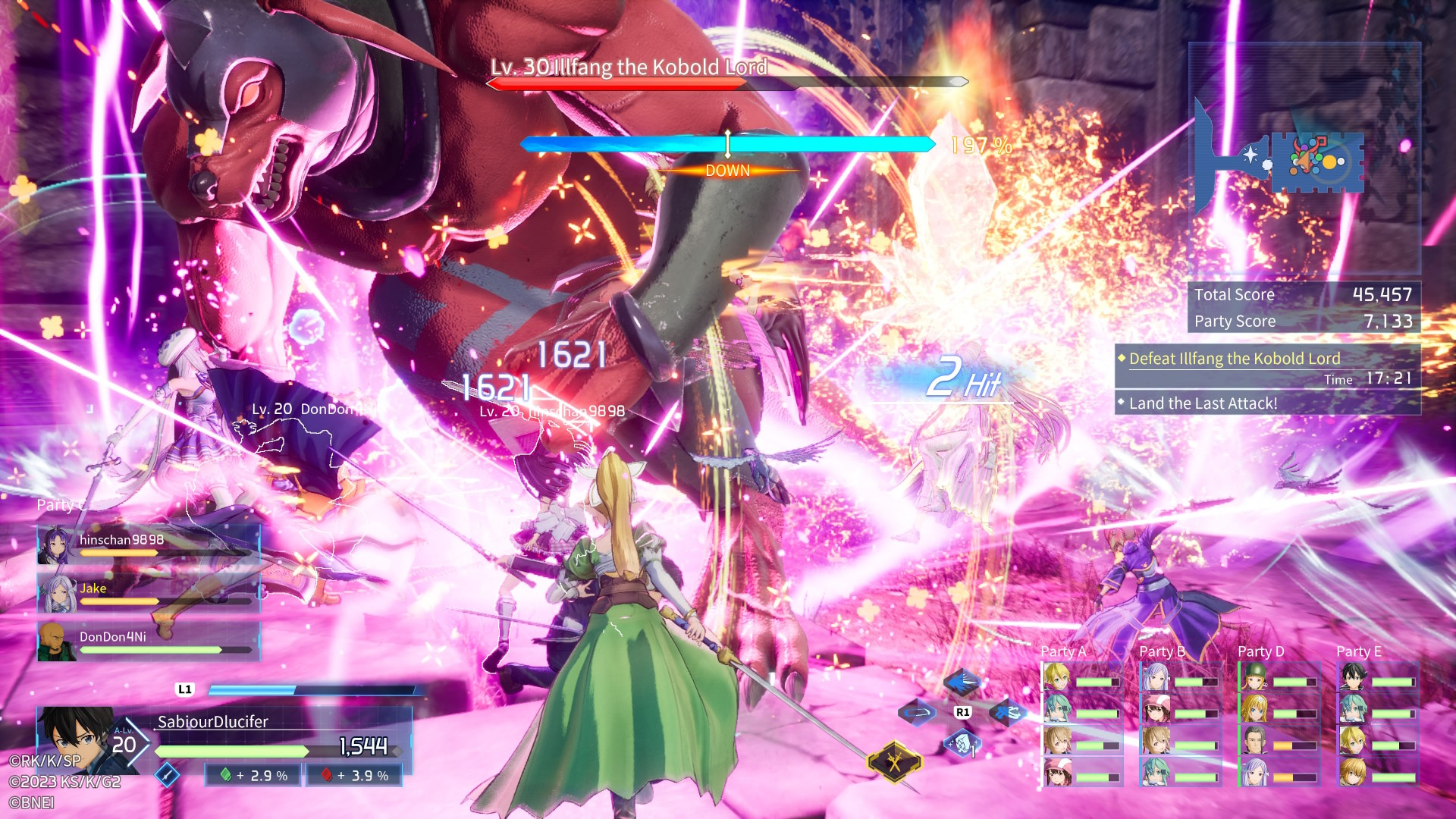
The combat in terms of initiating combo is flashy, intuitive, and fun, dazzling the screen with my button mashing that looks like fireworks and ballet combined but this is further diluted with clunky camera and janky animations that can make it difficult to see what’s happening around me since this game will force you to be surrounded by enemies pretty quickly.
You will at times miss your combos or ultimate due to the camera issues constantly and that’s how frustrating it is playing this game.
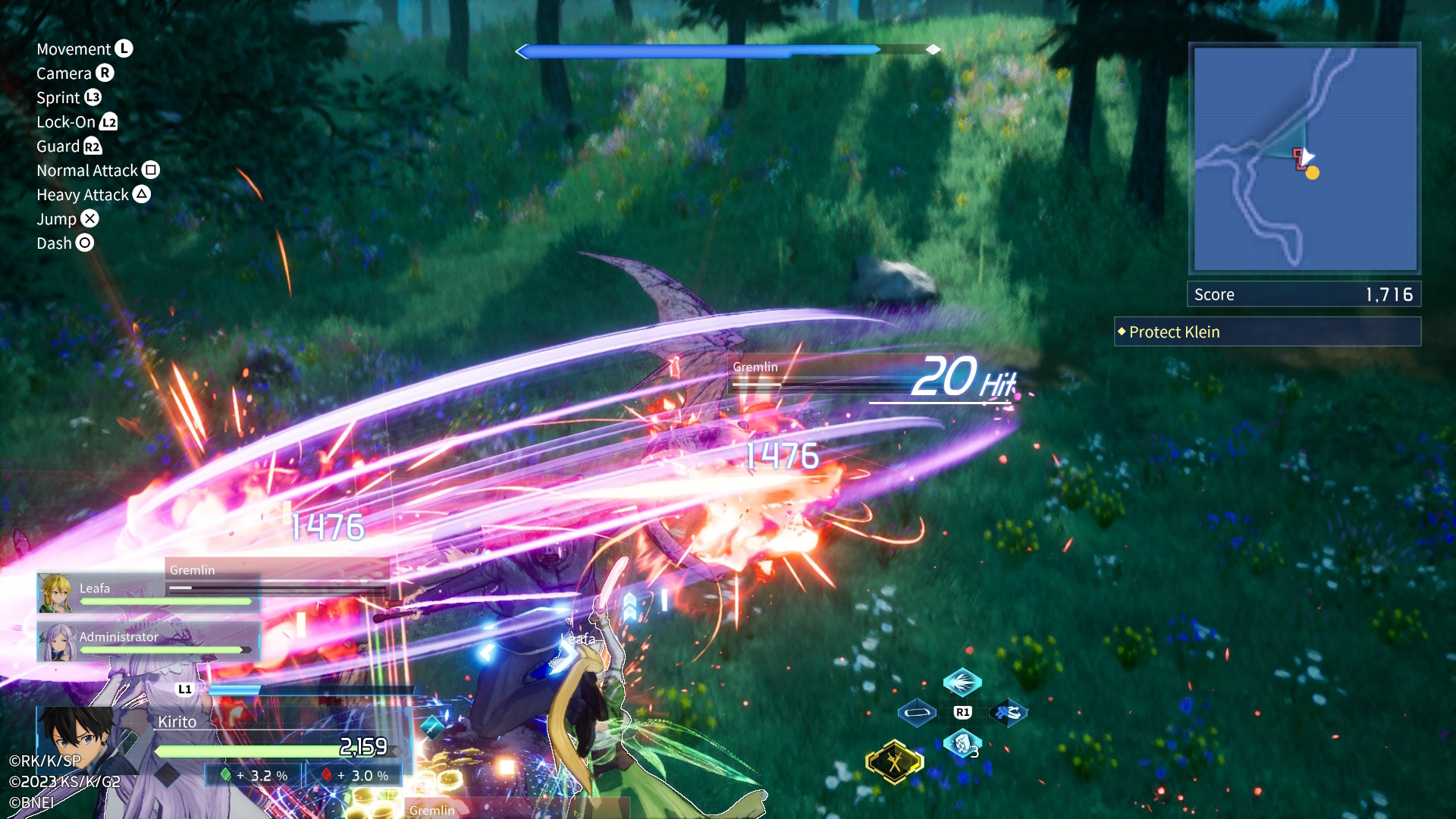
While every twenty-one characters have their own unique combos, specials, and ultimate moves, they are pretty much fixed and can’t be customized later on even via leveling up.
Leveling up only gives one stat boost and a rank to allow you to collect better gear at the end of a mission to increase your stats such as attack power, elements, or higher HP (health points) to last longer in combat, rather than improving your character’s abilities.
While SAO’s main draw is the flashy combat, the repetitiveness comes from its overall grind from lack of character customization in skills.
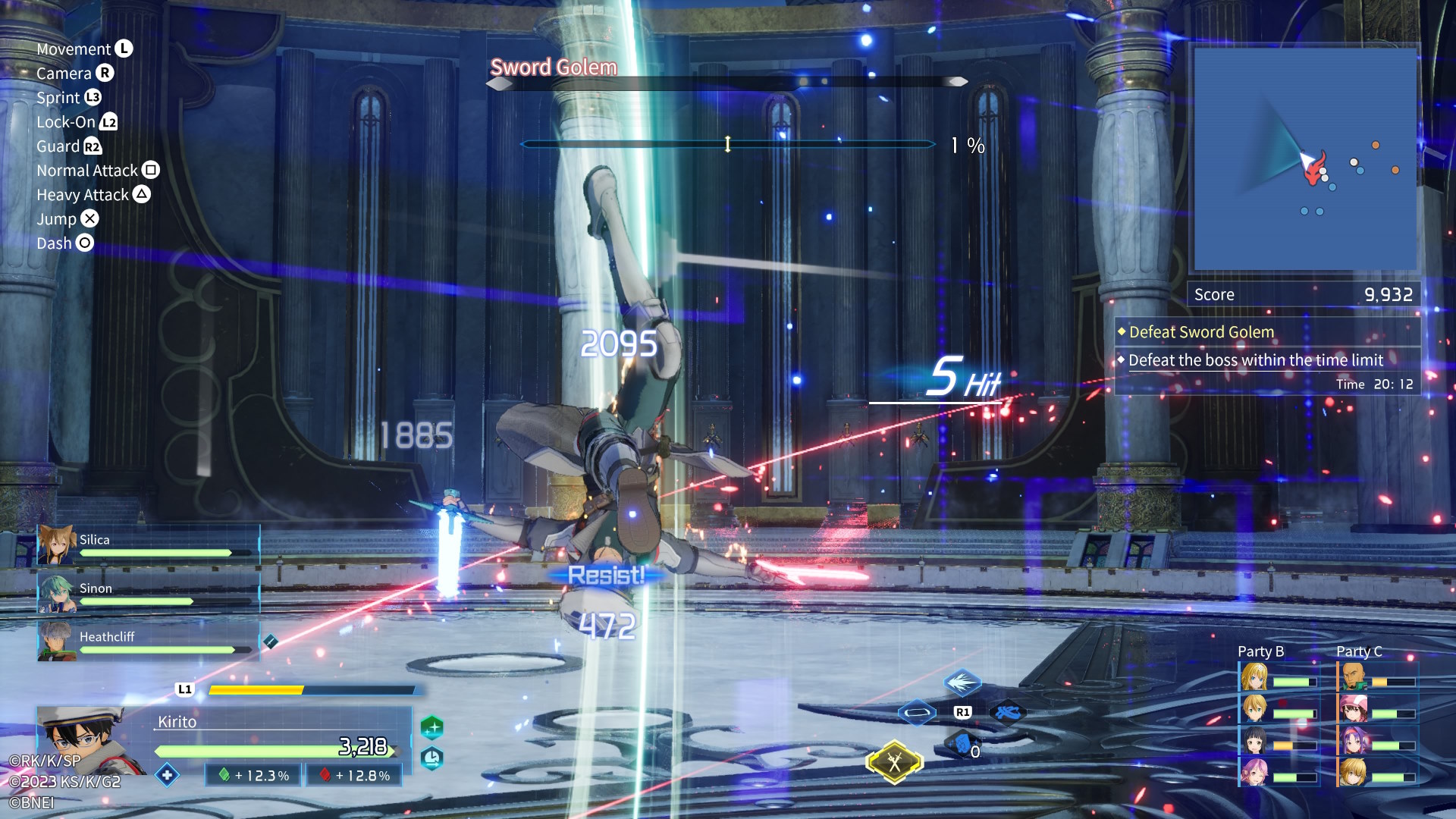
You could only heal three times in combat on your own, and trust me, that’s not much when the healing orb collectibles from enemy drops and some ally skills of healing are pretty scarce or low in the amount of healing they bring. So in the end don’t get hit at all by dodging and blocking to reduce damage.
But not to worry as reviving is unlimited as long your party isn’t wiped out so it’s survival of the fittest, folks.
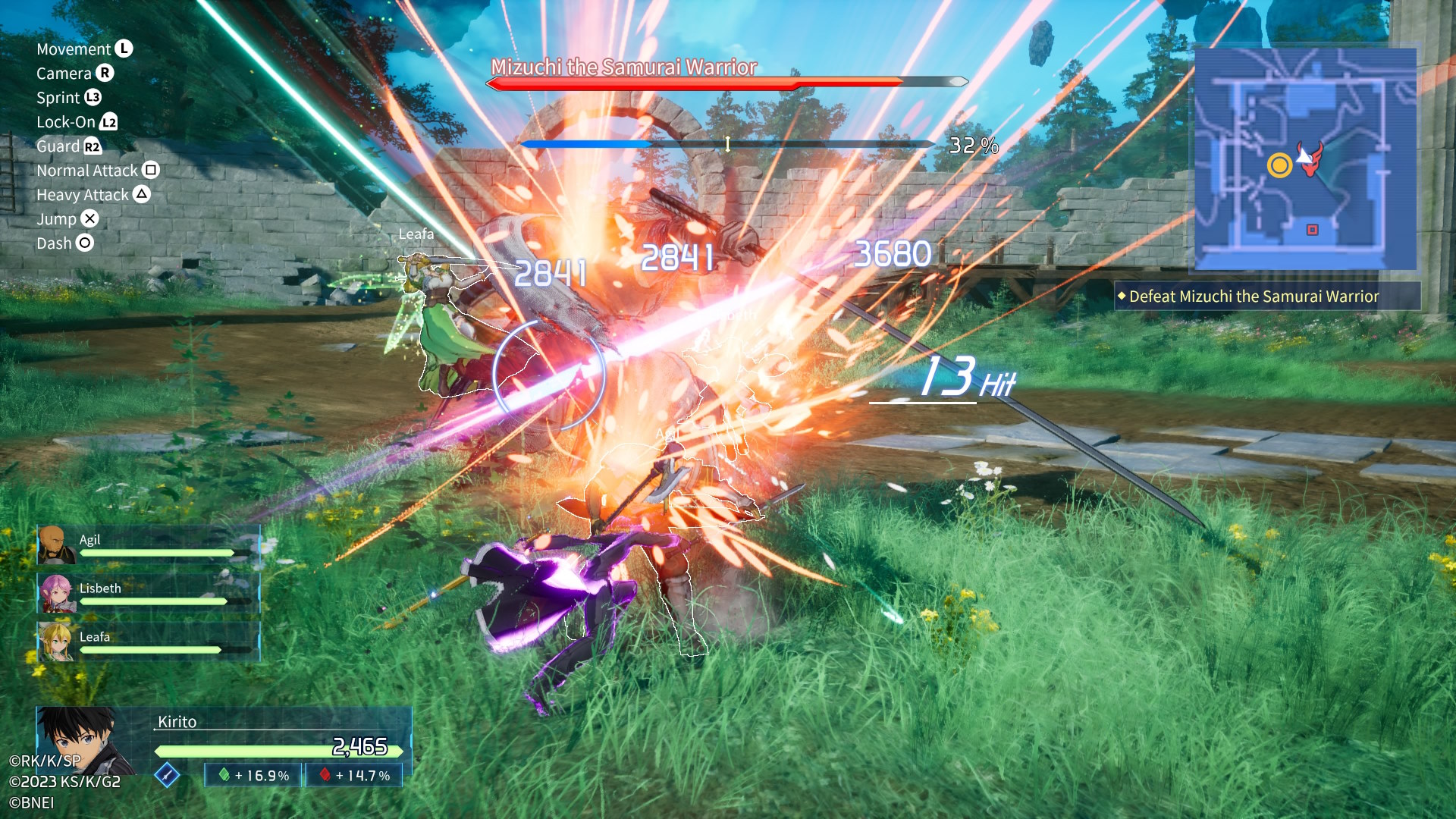
The battle flow is pretty linear and dry at first but things only pick up near the last three bosses where it is done raid-style combat where bosses are tankier, hit harder in larger radius and react when you hit their weak spots to stagger/stun them.
Elements play a huge part in getting more damage on the enemies type with bigger damage numbers and that’s as many interesting things are going on with the game apart from the combos that will grow old into a mold eventually.
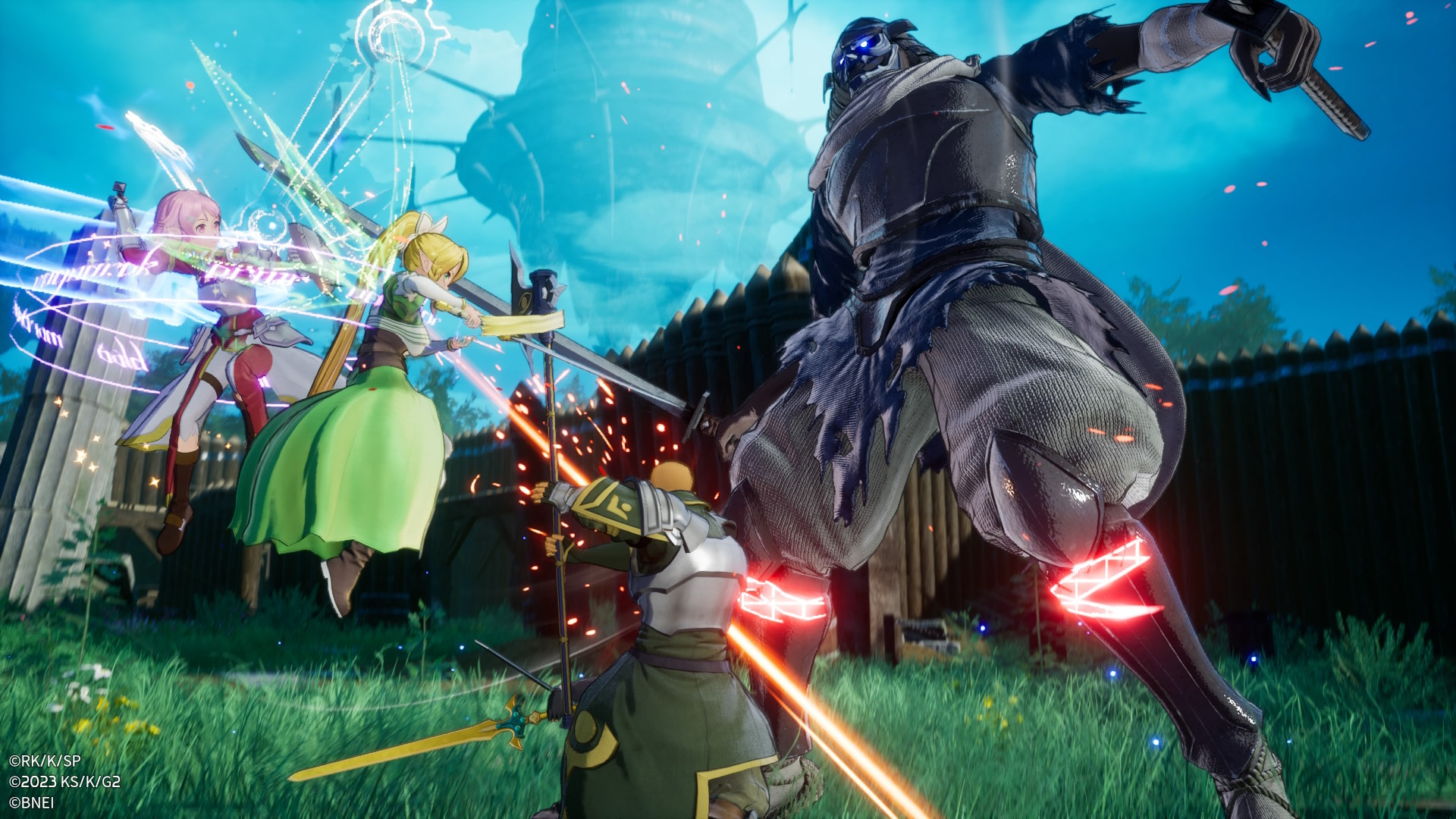
Enemy and Level Designs – Only one aspect is beautiful
First off, let me point out that the forest area is designed like the main menu screen —easily the visual showstopper. With layered branches, lighting, and shrubs are layered with flowers and swaying movements to mimic winds, a form of a live canvas in motion.
However, my hype takes a nosedive as SOA introduces other areas such as cityscapes, deserts, and dungeons that just look like static and dry dull canvas. It is pretty obvious that the designers focused a lot on forest areas and neglected the others.
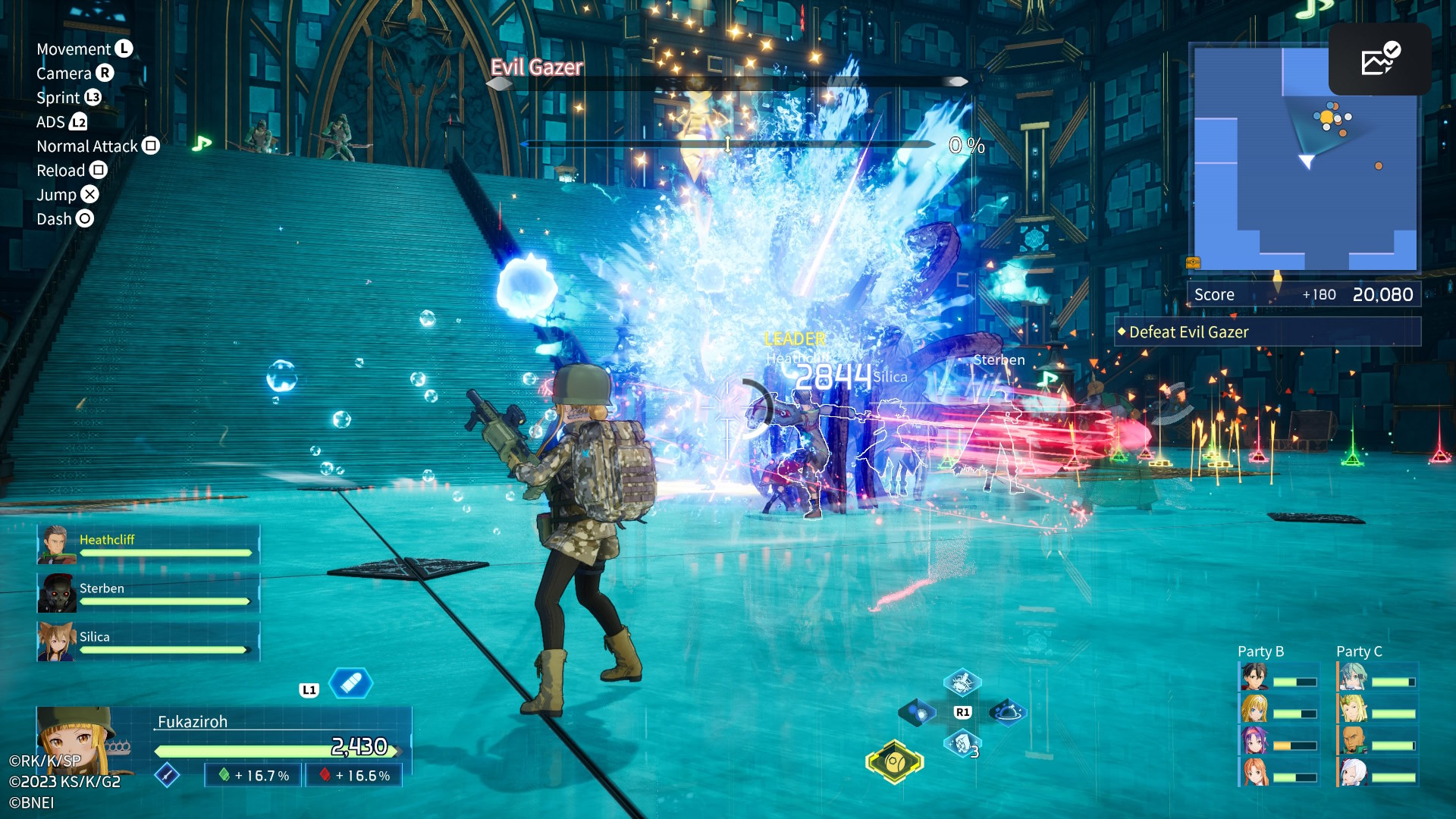
Now, let’s talk about the enemy designs—a yawn fest as you will be squaring off against the same enemy types such as wolves, armored goblins, flying critters, angels, and scorpions throughout most of the game. With only one or two move sets for these regular baddies in comparison to the final three epic bosses in the raid combat – leaving me pretty underwhelmed and bored in engagement after a while.
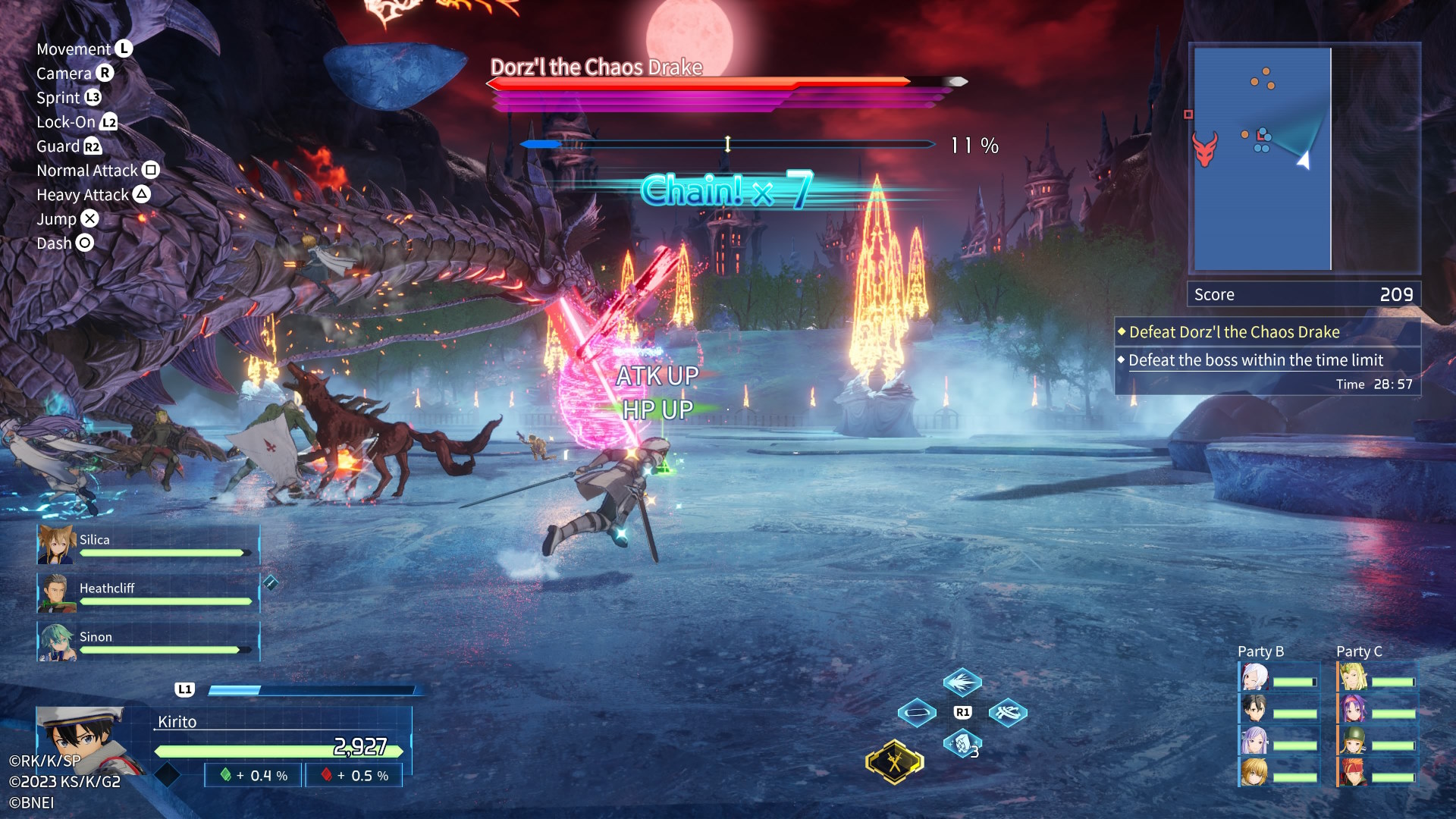
Cinematic and Sounds – Brewed Wonderfully
The cinematics are pretty decently made with characters showing some level of right emotions in the scenes with expressions that don’t feel static.
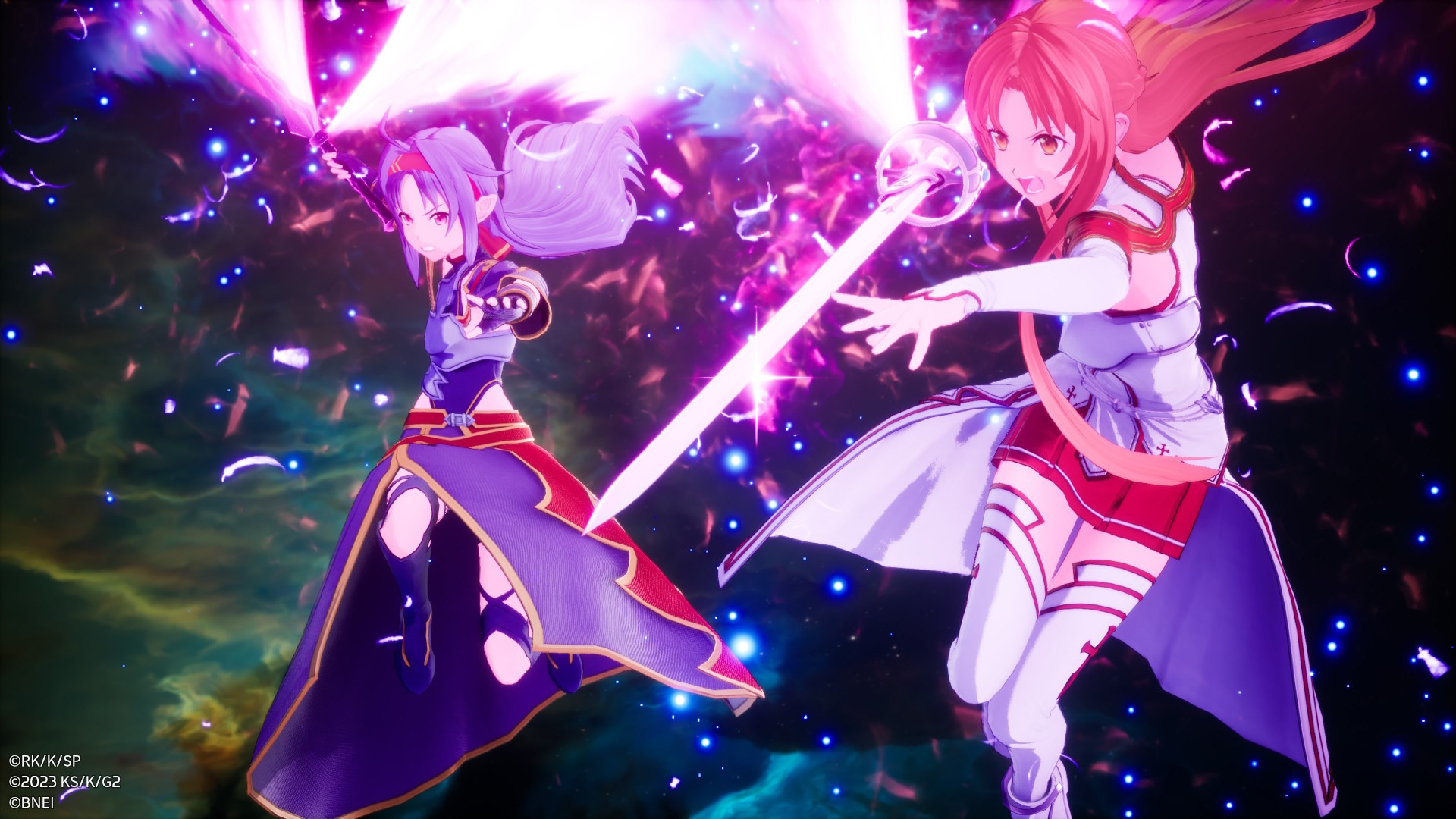
But honestly, the early scenes are skippable as it’s mostly focus on character introductions with each other. That being said, certain scenes show some questionable object textures such as fruits that will appear downgraded in texture, so bear that in mind.

However the cinematic does pick up steam near the end with more flare, sparks, and action scenes, where the action goes full throttle and everyone must band together to take down that one epic boss.
Followed by credit songs that are absolute bangers that should be slipped between slower scenes to keep scenes from getting yawningly dry.
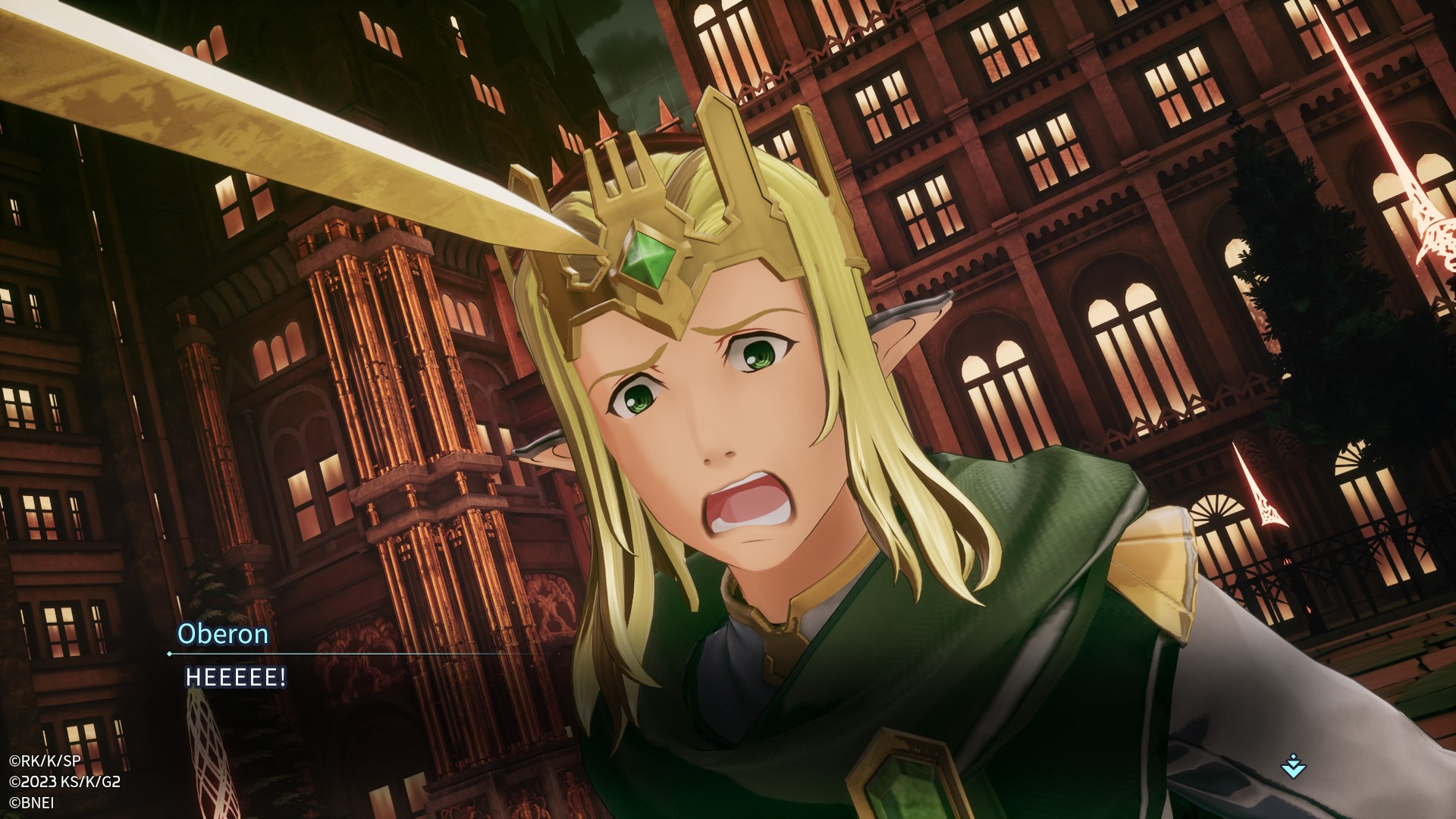
On a side note besides the impeccable voice acting, the soundtracks in the game have classic MMO tunes vibes on them which is definitely on the generic side but there is some mix of electric guitars, wind instruments, and other surprises that really kicks in, to keep things lively and upbeat.
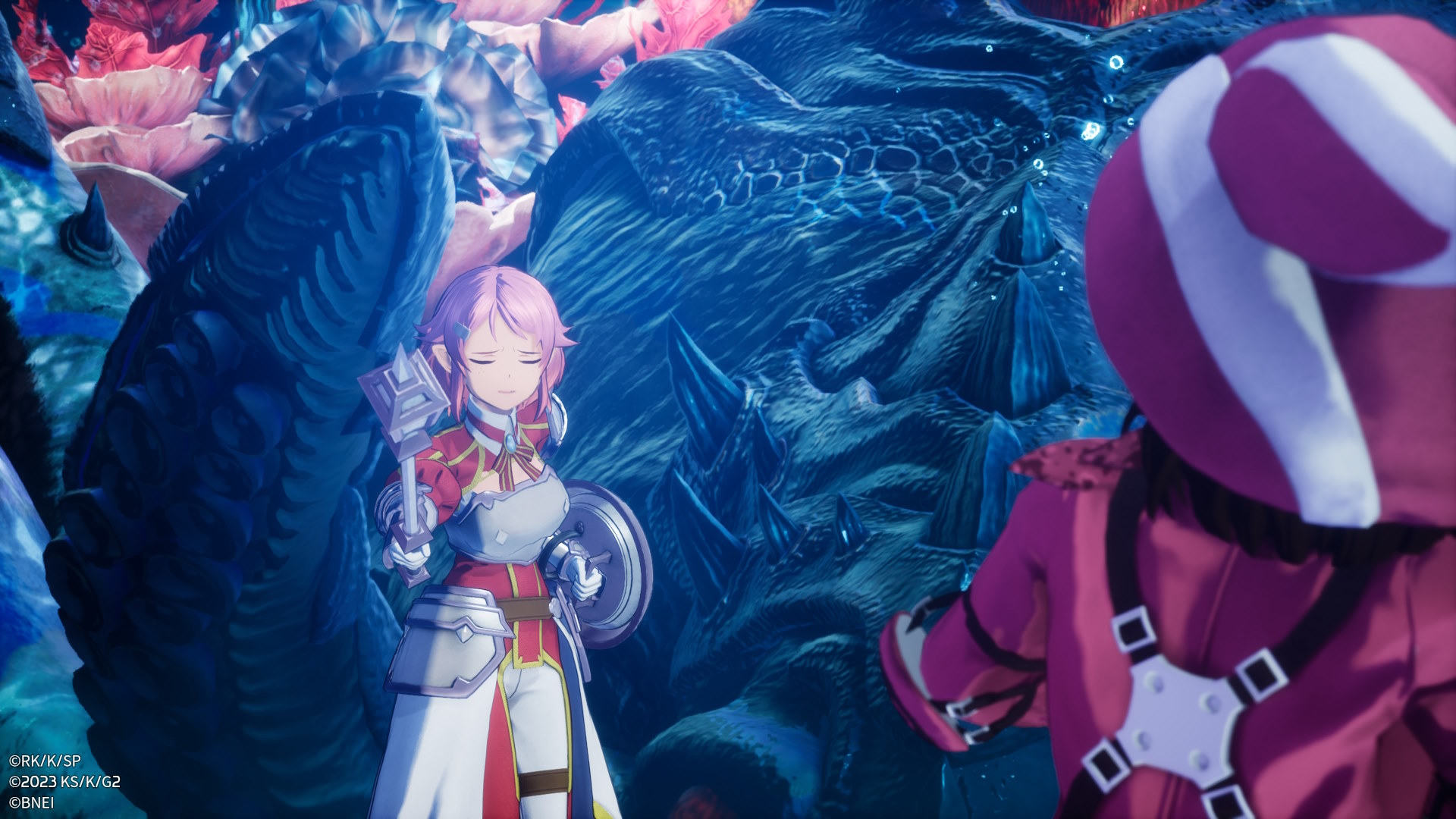
It’s not really have that WOW factor or groundbreaking tunes but it sure knows how to pump up some energy to the tunes of the fields and combat when it needs to.
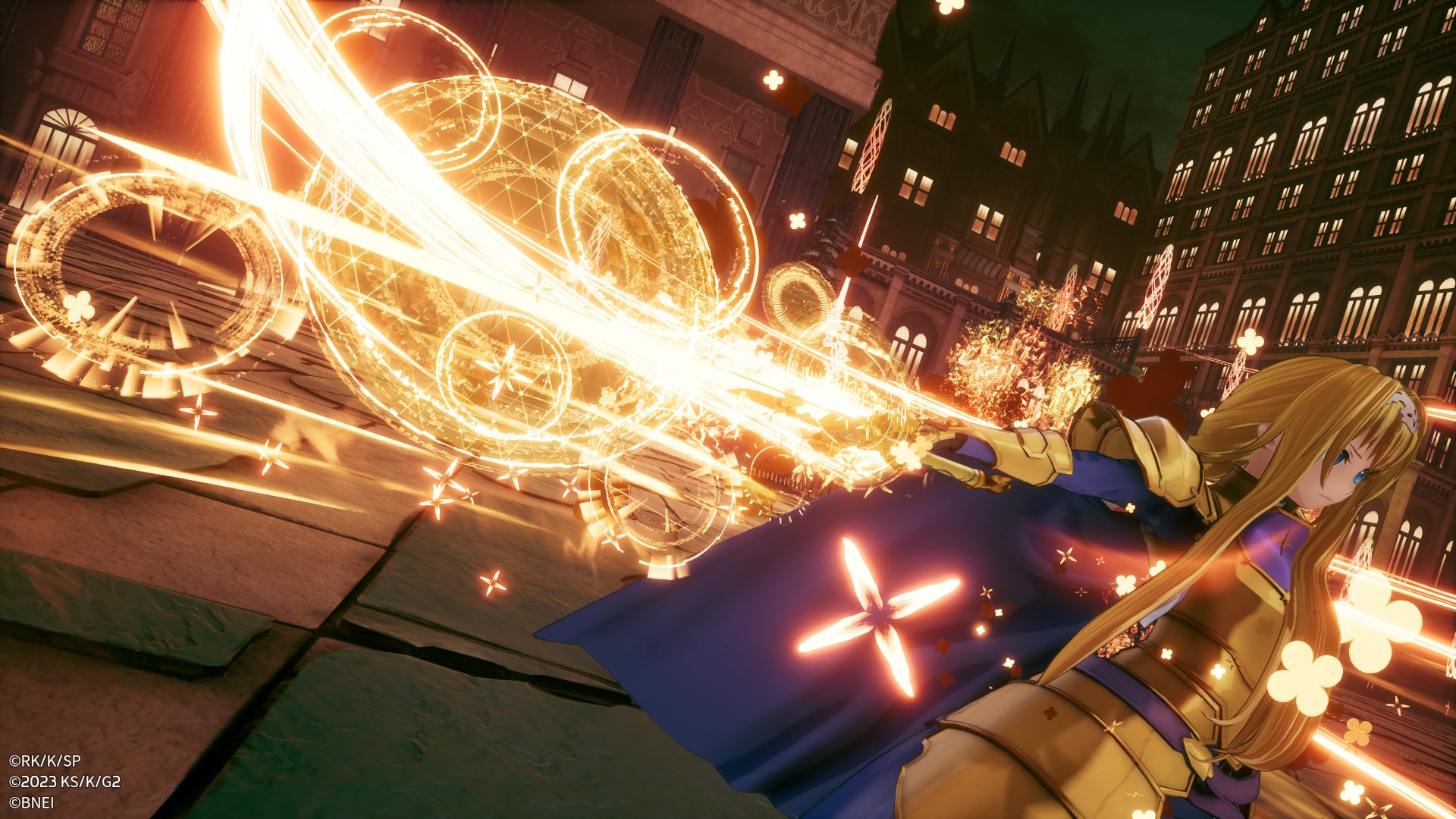
What I liked about SWORD ART ONLINE Fractured Daydream
Voice Acting and Music – Decently made
Cinematic – Shows some level of fun and expressions from the characters and action only picks up near the end
Combat gameplay – Flashy intuitive combos, each character with their own combo sets
Forest Level Design – Simply beautiful
Raid Bosses – Bosses near the end are pretty fun and challenging to fight against.
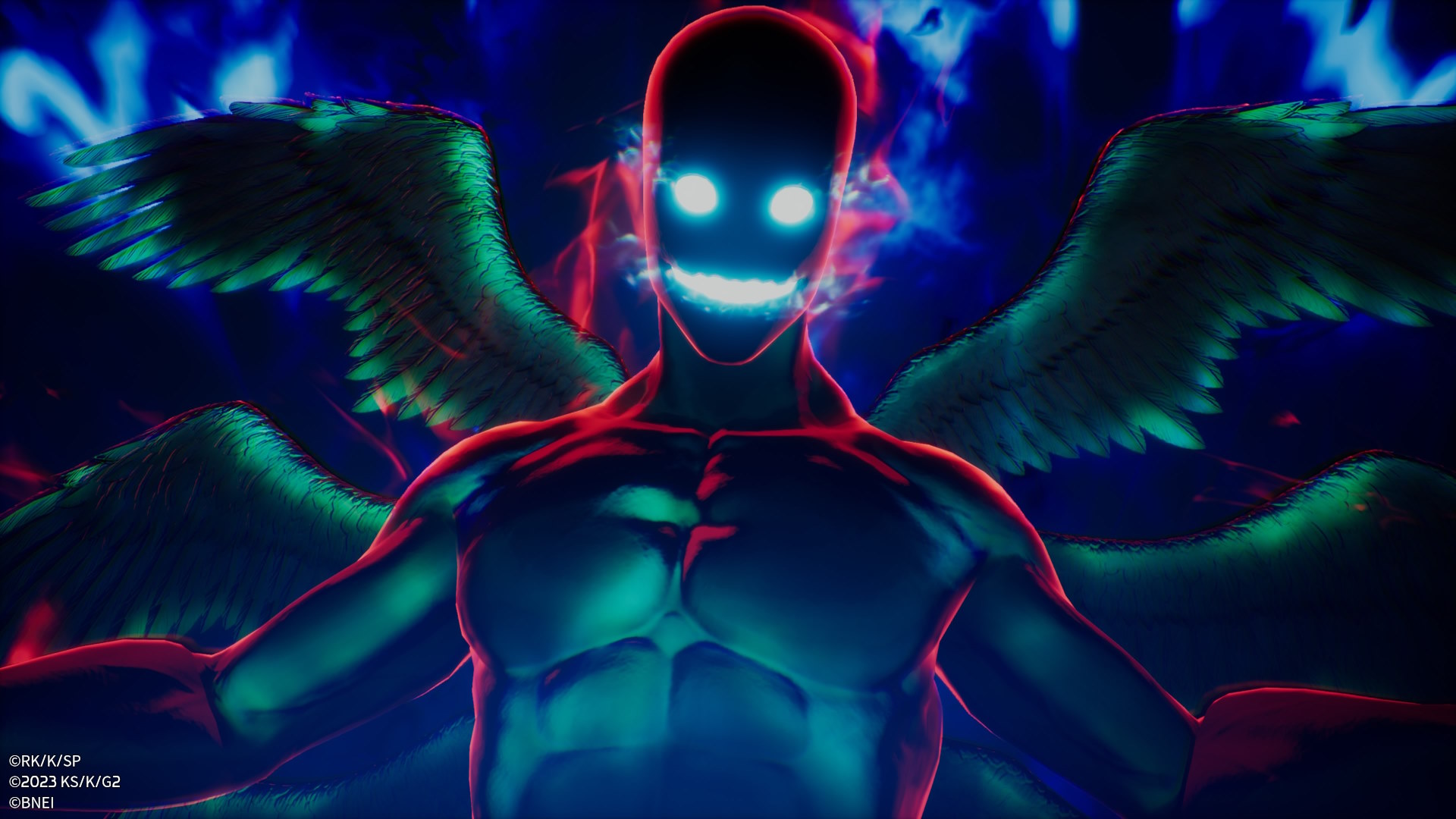
What I wished was better –
Story – Starts as an introduction between characters and seeps into the interaction between all of them but things only pick up near the end.
Combat – The camera work is janky and will make you miss your attacks. Healing is pretty scarce.
Level design – Other than the forests, everything else is a dry flat canvas. Some fruit objects textures appear downgraded.
Enemy Design – Can get pretty much the same enemy type in each mission and similar predictable attack patterns which makes the gameplay loop into a grindy burnout
Past archives or backstory – Locked behind a crystal-like paywall
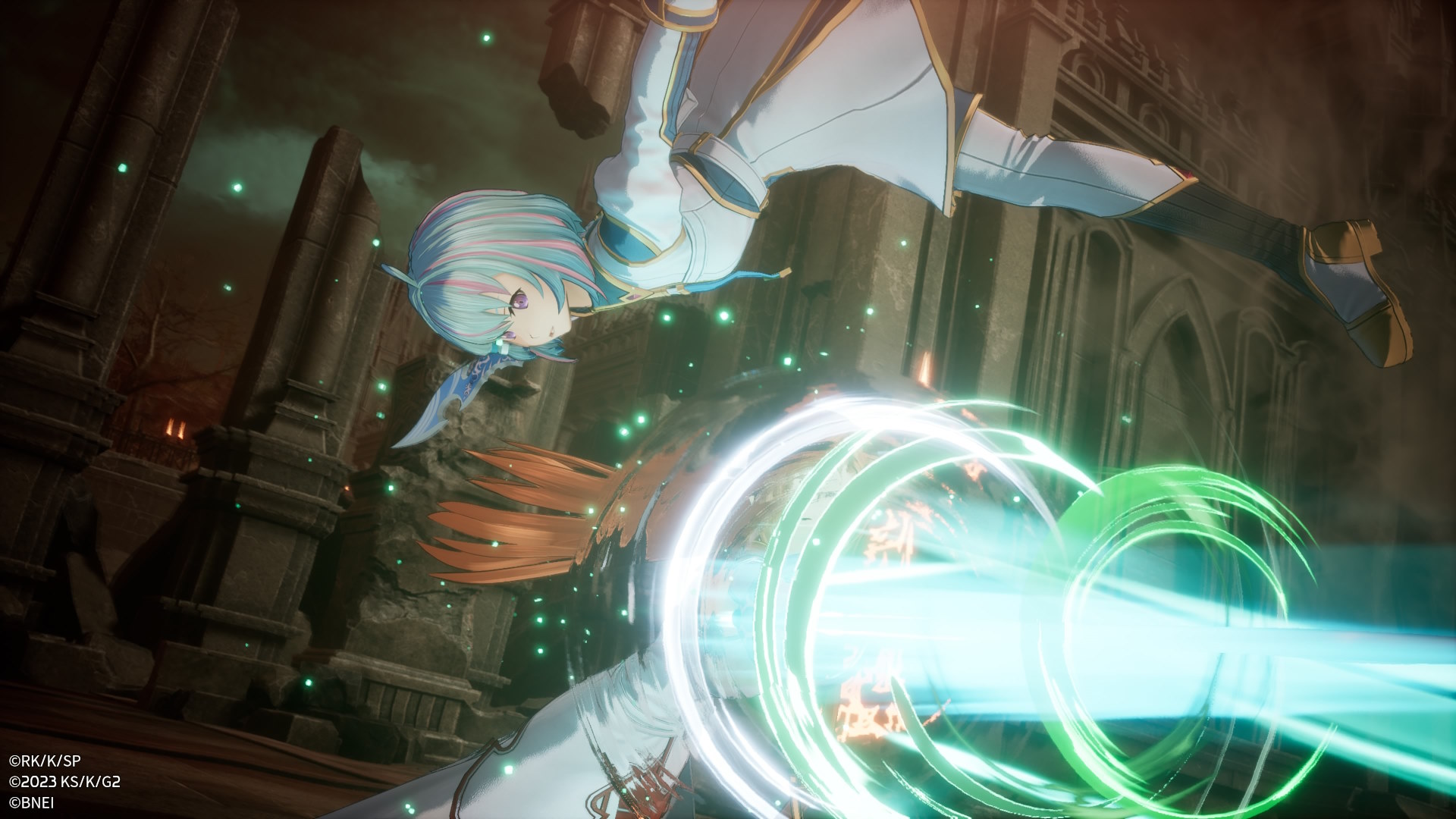
Verdict – One Of The Better Ones
Not all SAO games hit the mark, this one in particular has an overall decent experience. Bear in mind that, the main campaign only kicks into high gear near the end. Hence, from the start till the midpoint of the game, it does feel like a fan-service grind-fest with a slightly wonky combat camera thrown into the mix. This also makes sniper shots just hit hard as you fall back from the recoils.
That being said, I will recommend die-hard fans to play this, as they will enjoy this more as there are many interactions between party members, the hub moments short cutscenes, side quests, and more interaction cutscenes between the folks.
That’s where the game shines brightest for the fans who remember every character’s traits and personality and how they react to each other.
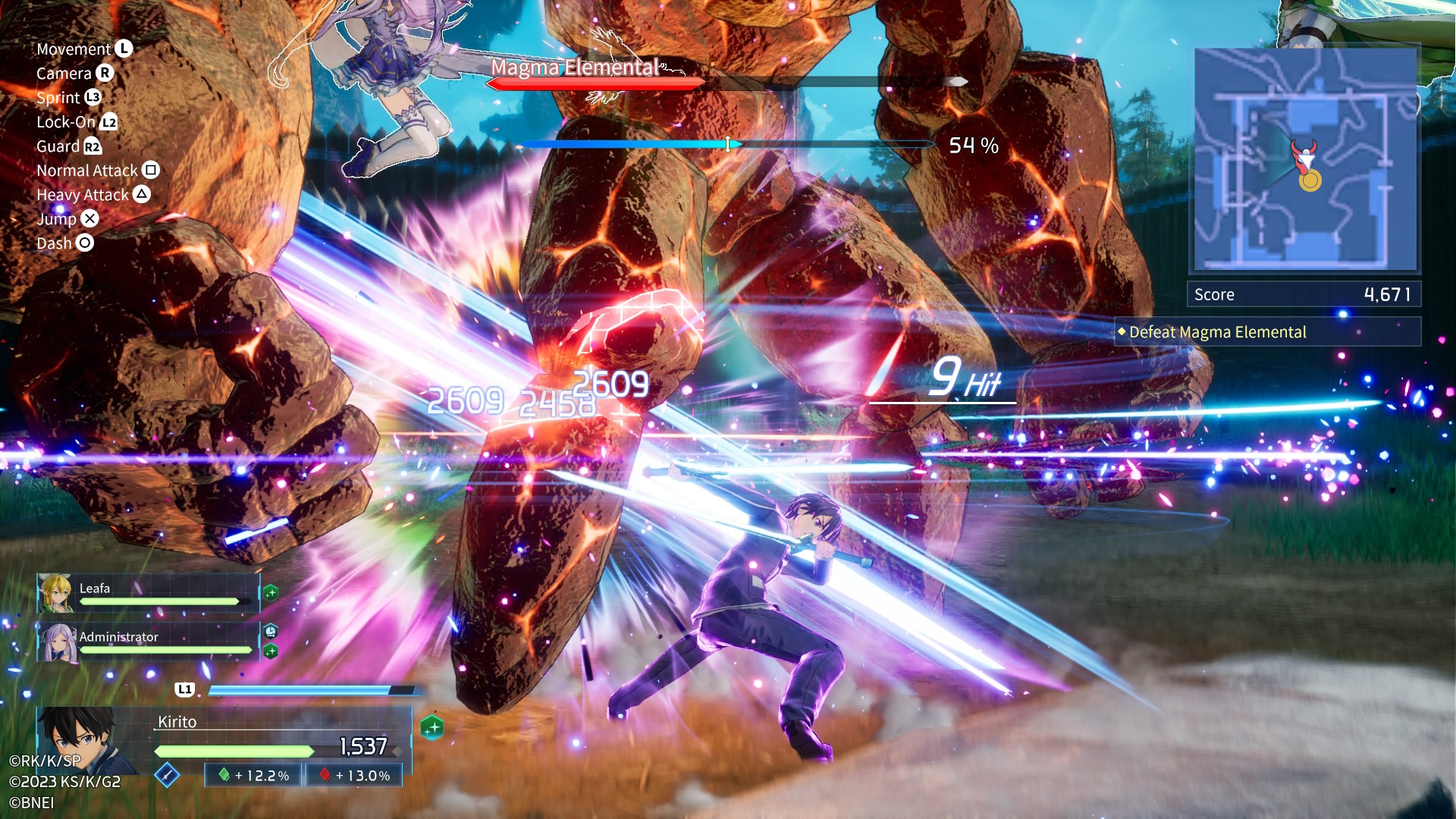
For casuals such as myself, this is a wait-for-sale category as the action and pacing stop being a mere introductory interaction and only pick up the action near the end of the main story and not consistently throughout.
